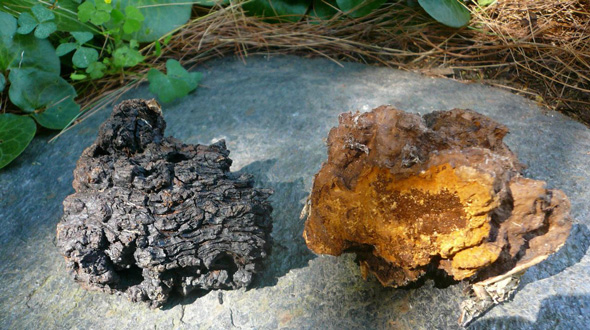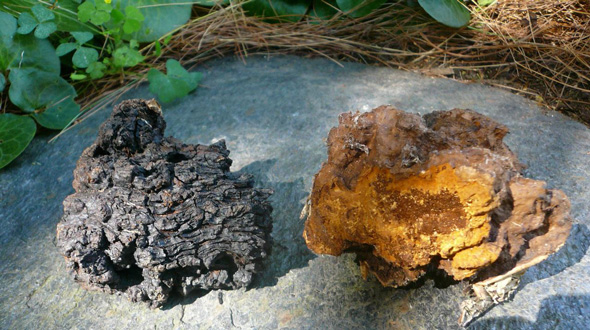
By Douglas Gook —
I’m propped up in my bivi/sleeping bag cover as I finish off this article. It was dark when I hiked up to this semi-familiar spot where I had camped at previous Robson Valley Music Festivals. When I woke up I had High bush cranberries and thimbleberries within reach. Across the small creek dip that I’m perched beside, I see a softball sized button of Chaga popping out from the side of a middle aged birch tree that I had not noticed in previous years. I see around me many other wild herbs, lichens, and mushrooms that all have many nutritional and medicinal benefits. As a Wildcrafter, whether I’m in any city or the most untouched wild ecosystem, I’ve learnt that there is such a cornucopia of plants and fungi medicinals that grow all around us. The pharmacy is truly just outside our door. Learning the craft of herbalism and mycology is key to dissolving the domination of corporate pharmaceuticals in our current pill industrial complex.
When my two adult offspring were young, we made a commitment to each other that we would search out some type of wild food/medicinal every day. Learning new characteristics of the plant world all around us opened up a very deep appreciation of this important healing world. Hawthorn, burdock, cat tail corn, morels, plantain, and berries of every description are just a few examples of our wild quests.
Over the last eight years I’ve had a particularly strong connection to Chaga, Inonotus obliquus, a polypore medicinal that David Wolfe, the renowned super food activist, calls The King of Medicinal Mushrooms in his 2013 book about Chaga. This growth of mycelium is the highest anti-oxidant fungi on the planet. As a daily tea, I have found it amazing for keeping my immune system dialled. In a future article I’ll detail some of the other medicinal properties of Chaga.
Chaga grows on living birch trees in the Boreal forest regions of the world. Even though the Cariboo has more transition forest types, it remains a great place to find Chaga. Further South in BC it is rare. I spent a whole day searching in beautiful birch stands from Revelstoke to Nelson and found none. The Chaga growth often shortens the life of this early seral stage species by converting some of the birch’s fiber mass into this powerful fungi medicine. When you see a birch stand that has trees broken off, this can be an indication of the presence of the Chaga mycelium. Often the birch will be broken off at the Chaga growth.
Chaga only grows on living trees and can get quite large over decades. I leave softball size growths even though if harvested right they will regrow. The largest that I’ve found was 26 pounds. With drying it loses about a eighth of its weight. I chunk it into marble sized pieces and then dry it on stainless steel trays for at least three weeks at room temperature. To end up with coffee grind sized pieces, I use a grain grinder with its plates set wide. I then strain it through a dry pea sized colander. This makes for a wonderful tea mix for many cups of wild medicine. Just another example of the Pharmacy Outside Our Door.
Douglas Gook is a third generation settler who has lived, gardened and wildcrafted around the shores of Dragon Lake in Quesnel for all of his 55 years. He is a member of the Spirit Dance Cooperative Community and you can find him often at the Williams Lake and Quesnel Farmers Markets. Contact at [email protected] and 250 747 3363.

